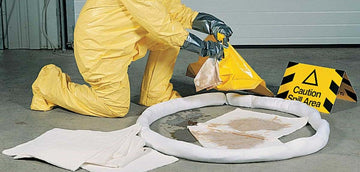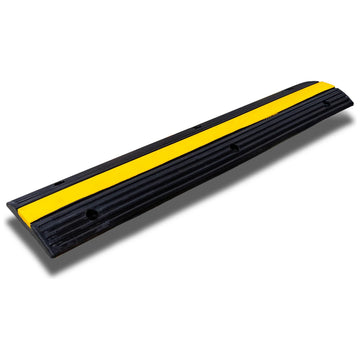Spill kits are essential tools for maintaining a safe and environmentally compliant workplace. Whether you’re in manufacturing, healthcare, or mining, spills can happen—and when they do, having the right spill kit can make all the difference. Here's a quick guide to help you select the best spill kit for your needs.
1. Identify the Type of Spill
The first step in choosing a spill kit is understanding the types of spills your workplace may encounter. Spill kits are generally categorized based on the liquids they are designed to handle:
- General Purpose Spill Kits: Ideal for cleaning up non-hazardous liquids such as water, coolants, and oils.
- Oil and Fuel Spill Kits: Designed specifically for hydrocarbon spills, these kits repel water, making them perfect for outdoor environments.
- Hazardous Chemical Spill Kits: Created for spills involving acids, bases, and other hazardous chemicals, ensuring safety during cleanup.
2. Consider the Spill Volume
Spill kits come in various sizes, from compact kits for small spills to large, wheeled kits for extensive cleanup operations. Assess the potential volume of spills in your area to determine the appropriate size.
- Small Kits: For minor spills in laboratories, offices, or small workshops.
- Medium Kits: Suitable for larger spills in warehouses or manufacturing units.
- Large Kits: Best for high-risk areas like fuel depots or chemical storage facilities.
3. Evaluate the Environment
Where the spill kit will be used is just as important as what it will be used for.
- Indoor Use: Lightweight and portable kits are ideal for quick response inside buildings.
- Outdoor Use: Weather-resistant spill kits are crucial for environments exposed to the elements.
4. Look for Key Components
A good spill kit should include the following essentials:
- Absorbents: Mats, pads, or granules designed to soak up the spill.
- Personal Protective Equipment (PPE): Gloves, goggles, and other gear to protect responders.
- Containment Tools: Booms or barriers to prevent the spill from spreading.
- Disposal Bags: For safe and compliant waste disposal.
5. Ensure Compliance with Regulations
Make sure the spill kit meets industry and environmental standards. Compliance ensures that your workplace is prepared for audits and avoids penalties related to improper spill management.
6. Train Your Team
Even the best spill kit is ineffective without proper training. Ensure your team knows how to use the kit effectively, and conduct regular drills to keep skills sharp.
Final Thoughts
Choosing the right spill kit doesn’t have to be complicated. By understanding your workplace needs and selecting a kit tailored to handle your specific risks, you can ensure a safer, more compliant work environment.
If you’re unsure about the best spill kit for your needs, don’t hesitate to reach out to a spill control specialist for expert advice. A little preparation goes a long way in keeping your workplace safe!



